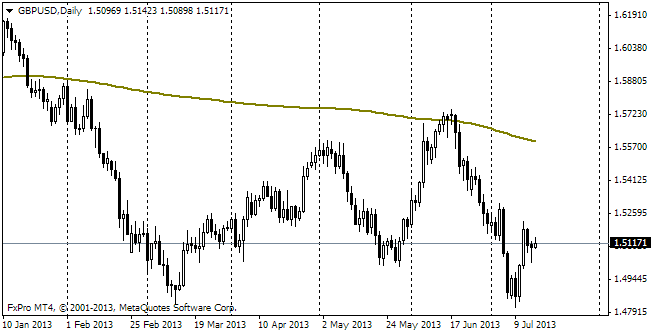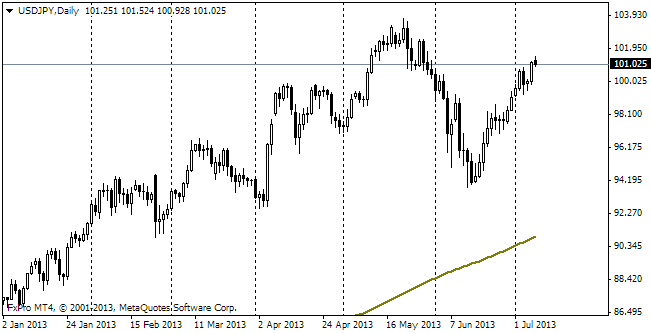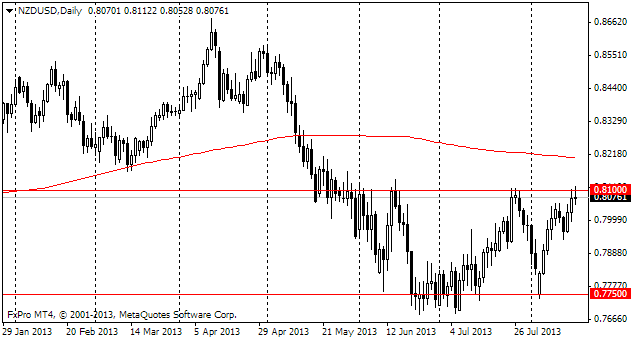EUR/usd
Yesterday the single currency tried to demonstrate timid attempts to grow, but already this morning the pair quickly returned to the local lows. Behind yesterday's purchases there was scarcely anything more than cautious desire to lock in profits after the preceding decline of the euro. For this reason eurusd managed to reach only 1.3440, besides the daily low was just 15 pips below it. Now trading is held close to 1.3430 and promises to be as sluggish as yesterday due to absence of macroeconomic statistics. The opposite can be expected, perhaps, only if the US Consumer Confidence will be much different from the forecasts. Now the index is supposed to grow from 85.2 to 85.5. Should optimism around the USA grow, the pair may decline further, as it is quite likely that it will stumble over the limit orders near 1.34. On the other hand, now the pair looks almost oversold. If it doesn't mean an immediate bounce (yesterday we hoped to see it), it can signal that the downward movement will be limited in the near future. At the moment we suppose that the major players will prefer to remain on the sidelines before the release of the first GDP estimate for the second quarter. Usually it more than others differs from forecasts of analysts, which can arouse violent reaction in the market. But also this week we will see reaction to the Fed's comments and employment data for July. Any of these news releases is able to add a figure to EURUSD or deduct the same amount from it. Besides, it is quite possible that they will act in different directions. For example, the GDP values will provoke USD's growth and employment statistics will take the currency back.
GBP/USD
The British sterling, just like the euro, is trying to consolidate at 1.70. For now it copes with this well, though earlier we noted that mainly it is this way because of the US statistics rather than because of the British data. By the way, today's statistics have reported increase in mortgage approvals, but it hasn't helped the British currency even a bit. Until now it remains below 1.70.

USD/JPY
The yen continued its decline. Technically, the poor employment data serves as a trigger here. Despite the increase in the vacancies/jobseekers ratio, the unemployment rate grew from 3.5% to 3.7%. Besides, the economic participation rate remained unchanged – 59.9%. In the meantime, we also see decline of retail sales by 0.6% y/y and household spending – by 3.0% y/y. In our opinion, the Japanese economy is not as thriving as considered by the BOJ. The introduced reforms gave a short-term impulse, which has already started dying. Under such conditions it is necessary either to stimulate the economy (by taxes and public spending rather than by the printing press) or to watch the gradual sunset of the Land of the Rising Sun. Disregarding the long-term prospects, we'll just note that the pair now is again trying to catch hold of its 200-day MA, now passing through 102.

NZD/USD
It is pretty obvious that the RBNZ's comments were like a bolt from the blue for Kiwi-traders. Since last week the Kiwi has lost 2 figures (or 2.3%) against the dollar, today it's fourth consecutive day of decline. Besides, the total pullback from the peak made already about 4%. The pair is so much oversold that it can't even enter the neutral zone, which has increased chances of correction. This way the 200-day MA, that is 0.8455, is not far off.
